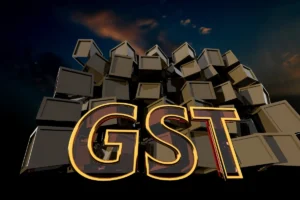
India’s Gross GST (Goods and Services Tax) collections have surged to an all-time high of ₹22.08 lakh crore in the financial year 2024–25, effectively doubling from ₹11.37 lakh crore in FY 2020–21.
The Union Government released the data on Monday, highlighting the strength and maturity of India’s indirect taxation system eight years after the rollout of the GST regime.
The monthly GST collection average rose sharply to ₹1.84 lakh crore in FY25, an increase from ₹1.68 lakh crore in FY24 and ₹1.51 lakh crore in FY22.
The highest-ever monthly collection was recorded in April 2025 at ₹2.37 lakh crore, followed by ₹2.01 lakh crore in May. The data for June is expected to be released on Tuesday.
Tax base expansion
Since its inception in July 2017, the GST system has witnessed a remarkable expansion in its taxpayer base.
Registered taxpayers have grown from 65 lakh in 2017 to over 1.51 crore as of 2025.
This broadening of the tax base has been pivotal in supporting consistent revenue growth year after year.
The fiscal year 2024–25 witnessed a 9.4% increase in collections compared to the previous year, when revenues stood at ₹20.18 lakh crore.
Also, in FY23, the figure was ₹18.08 lakh crore.
By contrast, the GST collections in FY22 totalled ₹11.37 lakh crore, with an average monthly collection of ₹95,000 crore.
Official statement highlights reform impact
According to an official government release marking eight years of GST, “Since its rollout, the Goods and Services Tax has shown strong growth in revenue collection and tax base expansion. It has steadily strengthened India’s fiscal position and made indirect taxation more efficient and transparent.”
Introduced on 1 July 2017, the GST framework replaced nearly 17 local taxes and 13 cesses with a unified five-tier tax structure.
The reform aimed to simplify tax compliance, improve transparency, and create a unified national market.
As GST approaches its eighth anniversary, the government remains committed to further simplifying the tax structure and enhancing compliance.
Moreover, the consistent rise in collections, aided by digital infrastructure and improved enforcement, reflects growing economic activity and stronger fiscal discipline.
India’s GST journey continues to be a landmark in its economic reform process, offering promising prospects for sustainable revenue mobilisation and efficient governance.
Also Read: Sensex, Nifty Open Higher; Global Sentiment Lifts Indian Markets
To read more such news, download Bharat Express news apps



















